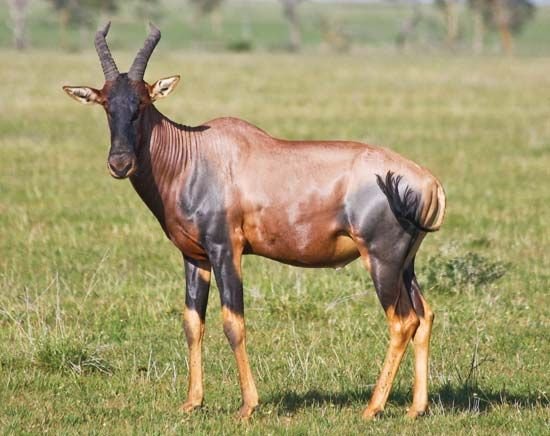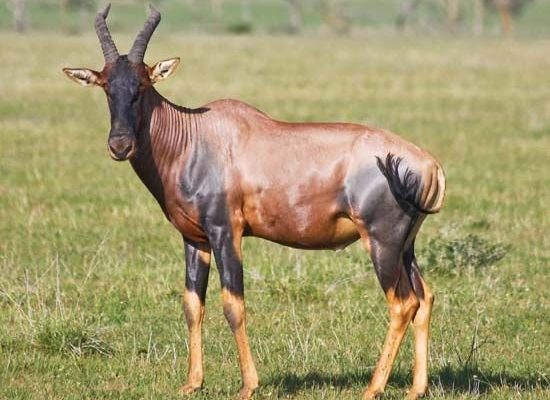
So, what’s the scoop on where these animals come from? Well, the evolutionary history of the topi is a blend of adaptation, survival, and even some surprising twists. Think of it like a dramatic saga where the characters evolve in clever ways to thrive in their environment. Let’s dive into this journey, exploring how the topi has developed over time and why it matters in the grand scheme of nature.
What Exactly Is a Topi?
The topi, scientifically known as *Damaliscus lunatus*, is part of the Bovidae family, which also includes animals like sheep, goats, and cattle. These agile antelopes are primarily found in East and Southern Africa, roaming the plains and grasslands. What sets the topi apart is its striking appearance. They’re known for their reddish-brown coats, dark markings on their faces and limbs, and a slick, streamlined body built for speed.
You might wonder about their size. An adult topi stands about three feet tall at the shoulder and can weigh between 110 to 250 pounds. Imagine them as athletic animals built for long-distance running across the savanna. This physique helps them escape predators like lions and hyenas, showcasing how their evolution is closely tied to the challenges they face in the wild.
Topis are social animals, often seen in groups called herds. These herds can vary in size but typically consist of females and their young, while males may gather in bachelor groups. Their social structure shows how they adapt to their environment, balancing safety in numbers with the need for resources like food and water.
The Ancestry of Topis
To understand the evolutionary history of the topi, we have to take a step back millions of years. The topi belongs to a larger group of animals known as the *Antilopinae* subfamily, which originated around 8 million years ago. This subfamily encompasses several types of antelopes, including the wildebeest and the gazelle.
Through fossil records and genetic studies, scientists have pieced together that the ancestors of the topi diverged from other lineages due to changes in climate and habitat. As temperatures fluctuated and grasslands expanded or contracted, these ancestors adapted to their new environments, becoming more specialized in their diets and behaviors. This is where the story of survival kicks in—nature’s relentless push for adaptation forced these antelopes to evolve distinct traits suited for life in the African savanna.
One fascinating aspect of their evolutionary journey is their adaptation to grazing versus browsing. Topis evolved to prefer grazing on grasses, which became increasingly abundant as the savanna spread. This shift not only impacted their physical development but also influenced their social structures and behaviors.
Physical Adaptations for Survival
Here’s the thing: survival in the wild isn’t just about being fast or strong—it’s about adapting to your surroundings. The topi showcases a range of physical adaptations that make it well-suited for life on the savanna. For starters, their long legs and slender bodies allow them to reach impressive speeds, often hitting up to 50 kilometers per hour, which is crucial for escaping predators.
Additionally, the topi’s large nostrils and keen eyesight are vital for detecting danger. Picture a topi standing still, ears perked and eyes scanning the horizon. They can spot a lion lurking in the grass much sooner than many other animals. This awareness, combined with their agility, allows them to react quickly when a predator is near.
Moreover, their unique coloring plays a role too. The reddish-brown coat helps them blend in with the dry grasslands, making it harder for predators to spot them. When they stand still, they can almost disappear into the landscape. This sort of camouflage is a clever evolutionary trick that has helped the topi survive where other animals might struggle.
Social Behaviors and Mating
Topis are not just fascinating because of their physical traits; their social behaviors are equally intriguing. These animals have a unique method of mating called “lekking.” During the breeding season, male topis gather in specific areas to show off their strength and attract female mates. It’s quite a show—imagine a group of athletes competing for attention, with each male displaying his best moves, from vocalizations to posturing.
This social structure has a couple of benefits. For one, it allows females to choose mates based on strength and vitality, ensuring that only the fittest genes are passed on to the next generation. Additionally, by forming herds, topis can watch each other’s backs. When one senses danger, the others quickly learn, making them more effective at evading predators.
Here’s a fun fact: topis can be quite vocal. They communicate using a range of sounds, from deep grunts to high-pitched whistles. This helps maintain social bonds and alert others in the herd about potential threats.
Conservation Status and Challenges
Despite their fascinating adaptations and rich evolutionary history, topis face several challenges today. Habitat loss is one of the biggest threats they encounter, often due to human activities like agriculture and urbanization. As land is converted into farms or cities, topis lose their natural grazing grounds. This is a significant issue since these antelopes rely heavily on open grasslands for food and shelter.
Additionally, hunting and poaching have put pressure on their populations. While topis are not currently endangered, their numbers could dwindle if these threats are not addressed. Conservation efforts are crucial to ensure that future generations can experience these amazing animals in the wild.
Organizations are working on various fronts to support topi populations. This includes protecting their habitats, creating wildlife corridors, and educating local communities about the importance of safeguarding these species. These efforts not only benefit topis but also contribute to the overall health of the ecosystem.
The Future of Topis
As we look forward, the future of topis depends on a combination of conservation efforts and public awareness. Educating people about the significance of these animals can lead to better protection and policies that ensure their survival. It’s about changing perceptions—viewing topis not just as “another antelope” but as an integral part of the African ecosystem.
There’s also hope in the form of ecotourism. By promoting responsible wildlife tourism, we can create economic incentives for local communities to protect rather than exploit these animals. When people can see the beauty of topis thriving in their natural habitat, it fosters a sense of connection and responsibility to ensure their safety.
Ultimately, the evolutionary history of the topi isn’t just a story of adaptation and survival—it’s a reminder of how interconnected all species are within their environments. Understanding their journey helps us appreciate the delicate balance of nature and the importance of protecting its diverse inhabitants.
As the sun sets over the African plains, the topi continues its timeless dance of survival, a testament to resilience and adaptation in the face of change. Whether you’re a wildlife enthusiast or just someone curious about the natural world, the story of the topi is one worth knowing.

